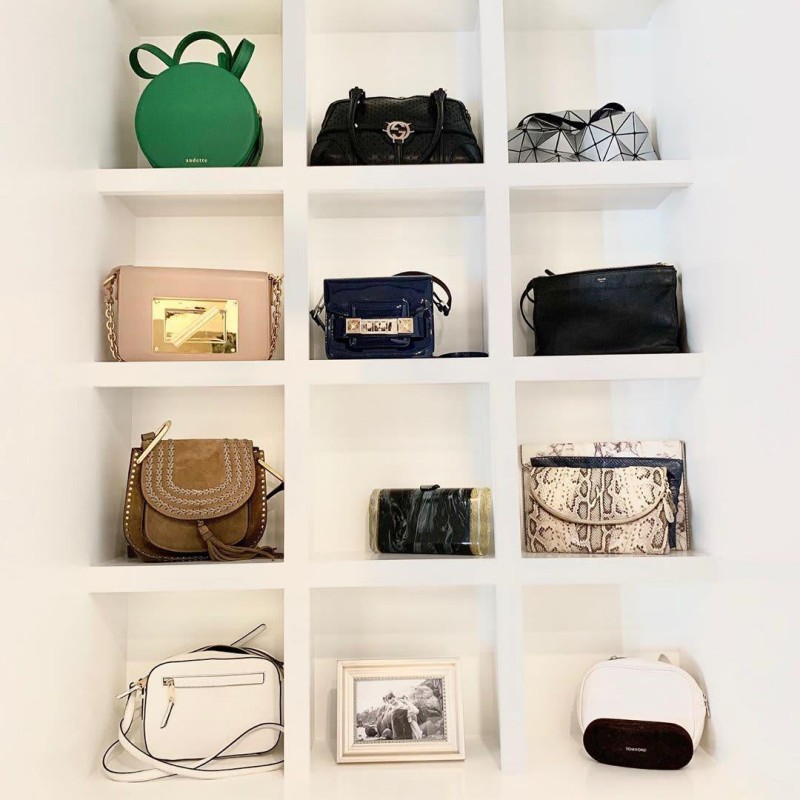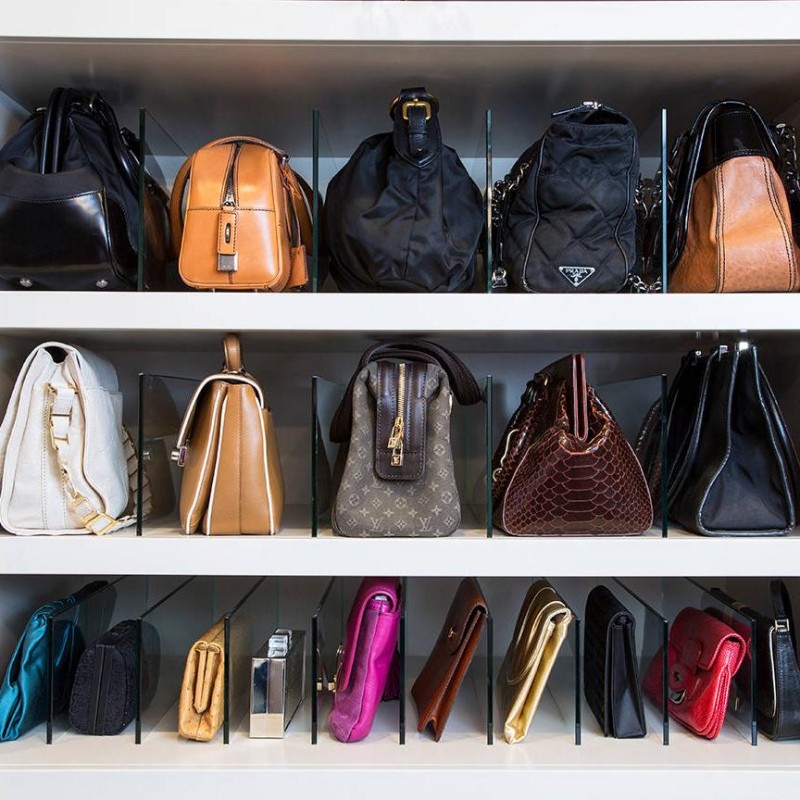When it comes to fashion accessories, purses hold a special place in many women’s hearts. They serve not just as functional items but also as key elements of personal style. With different shapes, materials, and colors, a purse collection can easily become extensive over time. However, managing this collection and understanding how to store purses properly is essential for preserving their quality and ensuring they last for many years. Improper storage can lead to deformation, fading, and even damage from dust and moisture. This comprehensive guide will explore various methods on how to store purses, including ideal conditions, practical storage solutions, and maintenance tips to keep your handbags looking their best. Whether you own a few cherished bags or a large collection, the right storage techniques will help you maintain your stylish treasures.

The Importance of Proper Purse Storage
Before diving into specific storage techniques and solutions, it’s essential to understand why proper purse storage matters.
Preventing Damage and Deformation
One of the main reasons to learn how to store purses is to prevent damage and deformation. Many purses are made from delicate materials, which can lose their shape if not properly supported. For example, a leather handbag can develop creases or indentations if it is squished too tightly in a drawer.
Maintaining Cleanliness and Condition
Dust, dirt, and moisture can lead to deterioration over time. When purses are not stored properly, they can easily accumulate dirt or mildew. Learning how to store purses correctly helps keep them clean and in good condition.
Organizing Your Collection
Proper storage techniques also aid in organization. Having an organized collection makes it easier to access your purses when you need them, allowing you to quickly find the bag that complements your outfit. An organized storage solution can also enhance your space aesthetic.
Maximizing Lifespan
Investing time in proper storage can significantly increase the lifespan of your purses. By protecting your bags from potential hazards, you ensure they remain in excellent shape for many years, allowing you to enjoy them to their full potential.
Factors to Consider When Storing Purses
Before implementing any specific storage methods, several key factors should be taken into account to maximize the longevity of your purses.
Material Considerations
The material of your purses greatly influences how you should store them. Leather, for example, requires specific care, while fabric purses may need different considerations. Understanding the material will help you tailor your storage methods accordingly.
- Leather: This material should be kept away from direct sunlight, as prolonged exposure can cause fading and dryness. Leather also benefits from moisture control.
- Canvas: Often more durable, canvas purses may be less sensitive to humidity but can still require careful storage to avoid creases and folding.
- Synthetics: Man-made materials may need less maintenance, but they can warp or misform without proper support.
Purse Shape and Design
Different purse shapes, such as structured handbags, slouchy totes, or crossbody bags, call for distinct storage techniques. Structured bags benefit from being kept upright with ample support, whereas slouchy bags may be better stored folded or flat.
Access Frequency
Consider how often you use various purses in your collection. Frequent use means that those bags should be stored in easily accessible locations, whereas rarer bags can be placed in less accessible storage options.
Climate and Environment
The environment where you store your purses greatly impacts their condition. Factors like humidity, temperature, and light can affect materials differently. For example, a damp environment can lead to mildew on fabric or leather, while excessive heat can dry out and crack leather.
Best Practices for How to Store Purses
With an understanding of the new factors to consider, let’s explore practical storage methods and best practices for purses.

Use Dust Bags or Cotton Storage Bags
Investing in dust bags for your purses is an excellent way to protect them. Most high-end handbags come with these bags for a reason. They keep dust and dirt away from the fabric, preventing wear and tear over time. If your purse didn’t come with a dust bag, consider purchasing cotton drawstring bags. They are breathable and can protect bags from all kinds of debris.
Stuff Your Purses
To maintain the shape of your purses, especially structured handbags, it’s crucial to stuff them when storing. Use acid-free tissue paper or bubble wrap to fill the inside of the purse gently. Avoid using newspaper, as the ink can transfer onto your bag.
Hang or Store Upright
Where possible, store your purses upright rather than on their sides. This positioning helps retain their shape and reduces the likelihood of creases. Hanging organized purses with sturdy hangers can also provide excellent visibility and ease of access.
Avoid Overcrowded Spaces
While it may be tempting to fit all your bags into one compact space, overcrowding can lead to deformation and scratches. Ensure that there is enough space for each bag. If necessary, dedicate a specific shelving unit for bags to keep them safe and organized.
Use Shelf Dividers
Implementing shelf dividers can be useful for maintaining vertical space while preventing purses from toppling over. These dividers provide separation, ensuring each bag has its own designated area without touching others.
Maintain Ideal Climate Conditions
As previously mentioned, ensuring that purses are stored in a controlled and dry environment extends their lifespan. Avoid storing purses in damp basements or attics that experience extreme temperatures or humidity swings. Rather, opt for a closed closet that’s climate controlled.
Storage Solutions for Different Types of Purses
As every purse type may require a specific approach, it’s essential to explore tailored storage solutions for various styles.
Handbags
For typical handbags, such as totes and crossbody bags, utilize a combination of shelf space and dust bags. These bags can often remain upright on shelves or in cabinets, maintaining their shape and accessibility.
Clutches
Clutches are often smaller and can be placed in drawer organizers or soft pouches. Storing them flat can prevent them from being crushed. If you have several clutches, consider storing them together in a clear plastic bin for easy visibility and access.
Backpacks
When it comes to backpacks, a fantastic way to store them is to hang them from hooks or over sturdy hangers. If space is tight, keep backpacks tucked away in a designated area, such as a hallway closet, to prevent them from getting stuffed uncomfortably.
Designer Bags
High-end designer bags require extra care when storing. Ideally, avoid stacking these bags together to minimize the risk of scratches or deformation. Allow room for each bag to breathe, and incorporate dust bags and stuffing for max protection.
Organizing Your Purse Collection
Creating an organized purse collection not only facilitates accessibility but can also make your storage area visually appealing. Here are some effective methods for organizing your collection.
Categorize by Style
Consider organizing your bags by style, such as clutches, crossbody bags, and totes. This way, you can quickly locate the type of bag that fits your outfit or occasion without sifting through different styles.
Color-Coded Arrangement
Another popular method of organizing purses is by color. A visually attractive color-coded collection can add a vibrant touch to your storage space, making it easy to find a purse that matches your outfit or mood.
Alphabetical Organization
For those with extensive collections, organizing purses alphabetically by brand or type can be efficient. This method is easily navigable and ensures that each bag is cleanly categorized.
Regular Purge Sessions
To maintain an organized collection, consider implementing regular purge sessions. Periodically assess your wardrobe, removing any bags you no longer use. Donating or selling these bags not only clears space but also gives them a new life.
Maintenance Tips for Your Purses
Proper storage is just one aspect of caring for your purses. Here are some essential maintenance tips to ensure they remain in top condition.
Clean Regularly
Keep purses clean by regularly inspecting them for dirt or stains. Depending on the material, use the appropriate cleaning method. For leather bags, a damp cloth often suffices, while fabric bags may require spot cleaning with suitable detergents.
Condition Leather Bags
If you own leather bags, consider using a leather conditioner periodically. This conditioner helps maintain moisture and gloss, preventing cracking and extending the life of your investment.
Protect from Moisture
Store purses away from moisture-prone areas to protect them from water damage. If you live in a humid environment, consider using silica gel packets in storage areas to absorb excess moisture.
Be Mindful of Wear and Tear
Take note of excessive wear and tear, such as fraying handles or worn-out zippers. Address repairs promptly to prolong your bags’ lifespan and maintain their functionality.

Conclusion
Purses are not just functional accessories; they are reflections of style and personal expression. Learning how to store purses correctly can prevent damage, extend their lifespan, and simplify your wardrobe management.
By considering factors like material, shape, and climate, you can choose the right storage solutions for each purse in your collection. Additionally, creating a well-organized and aesthetically pleasing storage environment enhances user experience when accessing your bags.
Finally, incorporating maintenance tips into your storage routine will ensure that each piece remains in top condition for years to come. With the right knowledge and techniques, you’ll be able to enjoy your purse collection without the worry of damage. By treating your bags with care, you can continue to enjoy them every day, showcasing your unique style as well as your responsible approach to fashion.